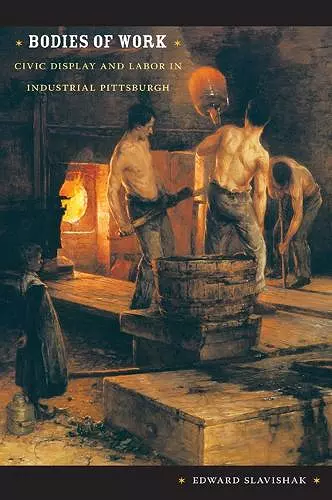Bodies of Work
Civic Display and Labor in Industrial Pittsburgh
Format:Hardback
Publisher:Duke University Press
Published:16th Sep '08
Currently unavailable, and unfortunately no date known when it will be back

Cultural history of the relationship between labor and the city in turn-of-the-century Pittsburgh
By the end of the nineteenth century, Pittsburgh emerged as a major manufacturing center in the United States. Its rise as a leading producer of steel, glass, and coal was fueled by machine technology and mass immigration, developments that fundamentally changed the industrial workplace. Because Pittsburgh’s major industries were almost exclusively male and renowned for their physical demands, the male working body came to symbolize multiple often contradictory narratives about strength and vulnerability, mastery and exploitation. In Bodies of Work, Edward Slavishak explores how Pittsburgh and the working body were symbolically linked in civic celebrations, the research of social scientists, the criticisms of labor reformers, advertisements, and workers’ self-representations. Combining labor and cultural history with visual culture studies, he chronicles a heated contest to define Pittsburgh’s essential character at the turn of the twentieth century, and he describes how that contest was conducted largely through the production of competing images.
Slavishak focuses on the workers whose bodies came to epitomize Pittsburgh, the men engaged in the arduous physical labor demanded by the city’s metals, glass, and coal industries. At the same time, he emphasizes how conceptions of Pittsburgh as quintessentially male limited representations of women in the industrial workplace. The threat of injury or violence loomed large for industrial workers at the turn of the twentieth century, and it recurs throughout Bodies of Work: in the marketing of artificial limbs, statistical assessments of the physical toll of industrial capitalism, clashes between labor and management, the introduction of workplace safety procedures, and the development of a statewide workmen’s compensation system.
“Following several decades of scholarship demonstrating the centrality of working-class men and women to the history of American industrial life, this study reminds us of the very powerful role of intellectual elites in the development of popular images of workers’ bodies as both enhanced and broken by the industrial machine. Edward Slavishak challenges labor and working-class historians to demonstrate in even more certain terms than before the myriad ways that workers’ portraits of themselves influenced popular perceptions of their bodies during the industrial age.”—Joe William Trotter Jr., Giant Eagle Professor of History and Social Justice and Head of the Department of History, Carnegie Mellon University
“In Bodies of Work, Edward Slavishak constructs a fascinating web of visual and textual evidence, interweaving various discourses on industrial labor, the male body, masculinity, and the city of Pittsburgh. From his creative new take on the Homestead strike and his subtle readings of visual culture to his startlingly original analyses of worker fatigue, the injured body, and the ubiquity of prosthetic limbs, he presents a broad new spectrum of ideas and approaches to the study of industrial labor.”—Melissa Dabakis, author of Visualizing Labor in American Sculpture: Monuments, Manliness, and the Work Ethic
ISBN: 9780822342069
Dimensions: unknown
Weight: 721g
368 pages